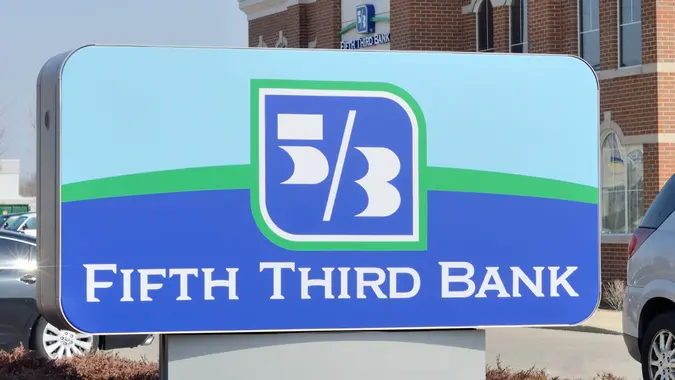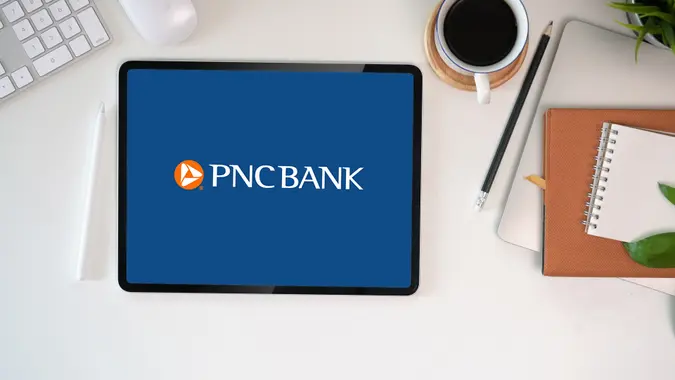Can You Keep Adding Money to a CD After Making an Initial Deposit?

Commitment to Our Readers
GOBankingRates' editorial team is committed to bringing you unbiased reviews and information. We use data-driven methodologies to evaluate financial products and services - our reviews and ratings are not influenced by advertisers. You can read more about our editorial guidelines and our products and services review methodology.

20 Years
Helping You Live Richer

Reviewed
by Experts

Trusted by
Millions of Readers
A certificate of deposit, often called a CD at banks or a share certificate at credit unions, provides an easy and profitable savings vehicle if you’re holding on to money for a specific event. With terms ranging from one month up to 10 years, a CD can help you save for a wedding, vacation, or a down payment for a new car or even a home.
Early withdrawal penalties may apply, so a CD is not the best option for an emergency savings account or cash you want to keep on hand for an indeterminate amount of time. Another drawback of CDs versus the best high-yield savings accounts is that, typically, you can’t add money to a CD after you make the initial deposit.
However, there are a few exceptions to this general rule. Let’s explore the various types of CDs so you can find the best CD accounts for your financial situation.
Can You Keep Adding Money to a CD?
The way CDs are structured, they promise a fixed interest rate and predetermined return on your investment at the end of a specific time frame. So if you open a 12-month CD with $1,000 at an annual percentage yield of 5.00%, at the end of one year, you can withdraw $1,050. That may not sound like a lot, but these numbers can scale to create substantial returns.
Consider the same CD with $20,000: You’ll earn $1,000 in one year. Or change the term to five years; a $20,000 CD can earn more than $5,525 in interest. With $1,000 in a five-year CD at a 5.00% APY, you’ll earn more than $276 in interest.
When you open a CD, you should think carefully about how much money you can afford to invest. If you open a CD with a small amount of cash, you won’t maximize your payout in interest. Open it with too much cash, and you might need to withdraw funds early. While the examples above used round numbers, you can open a CD with any amount of money, as long as it meets the minimum required deposit.
If you come into additional funds after opening the CD, you typically can’t add money to that CD. However, there are two exceptions to this rule, which provide ways that you can increase the amount of money in your existing CD.
Add Money to a CD After Its Maturity Date
Once your CD matures, which means it’s reached the end of its term, you have several options:
- Withdraw the funds to spend or reinvest as you wish
- Renew the CD (the interest rate may have changed)
- Add funds and renew the CD
Once a CD has reached maturity, you typically have a 10-day grace period during which you can add funds to the CD. You can also choose to withdraw funds at that time.
Keep in mind that any changes could also affect your APY. Depending on interest rates for CDs at your financial institution, it might be best to withdraw the funds and deposit them into a new CD.
Add-On CDs: How They Work
An add-on CD is a special type of CD that allows you to add funds to the account at any time. This gives add-on CDs the flexibility of high-yield savings accounts but with a fixed interest rate for the term of the CD. This way, even if federal interest rates go down, eventually leading to lower interest rates at financial institutions, your money is locked in to accrue interest at the higher rate.
However, some add-on CDs have lower interest rates than traditional CDs, making them a less popular choice. On the plus side, they might also have lower minimum balance requirements.
If you don’t have a lot of savings to start out, but you want to lock in your interest rate and keep your money safe for a set amount of time, an add-on CD could be a solid choice for you.
Before you invest in an add-on CD, find out if there is a minimum balance requirement, early withdrawal penalties (which are common with any kind of CD), and caps to the total amount you can deposit in the CD over time.
CD Ladders: An Alternative for Steady Cash
A CD ladder is a savings strategy where you open CDs of varying lengths, each with the same initial investment. You might open one-year, two-year, three-year, four-year and five-year CDs at the same time.
The CDs will mature at one-year intervals. When the one-year CD matures, you can put that money into a new five-year CD. A CD ladder gives you the advantage of reinvesting your CD, plus interest, for a longer term. But by staggering the initial terms, it also gives you the flexibility to pull out your investment if needed. Or you can increase your investment by adding more funds during the 10-day grace period after a CD matures.
CDs vs. Savings Accounts
A CD typically provides a higher interest rate than a savings account or an interest-bearing checking account. But those high rates often come at the expense of tying up your money.
CDs aren’t the best for emergency savings or even short-term savings goals since three- and six-month terms rarely offer the best CD rates.
Another option to consider is a high-yield savings account. Many savings accounts today offer 5% interest or more. Plus, when you open a bank account for checking, you may be able to link your savings account for a number of perks and benefits.
For instance, some banks allow you to use the money in your savings account to cover checking overdrafts. Some allow you to place your savings in different “buckets” to save for specific goals. It can be motivating to watch your savings add up.
Other banks allow you to round up your debit card purchases to the nearest dollar and automatically deposit the money into your savings account. This is apart from the obvious benefit of being able to add money to your savings account to see your balance grow over time.
Final Note
Ultimately, your choice to open a high-yield savings account, a traditional CD or an add-on CD or to set up a CD ladder depends on your short- and long-term savings goals, current interest rates and the amount you have to invest.
Being aware of all the options available can help you make the best banking choices for your financial future.
 Written by
Written by  Edited by
Edited by 

























